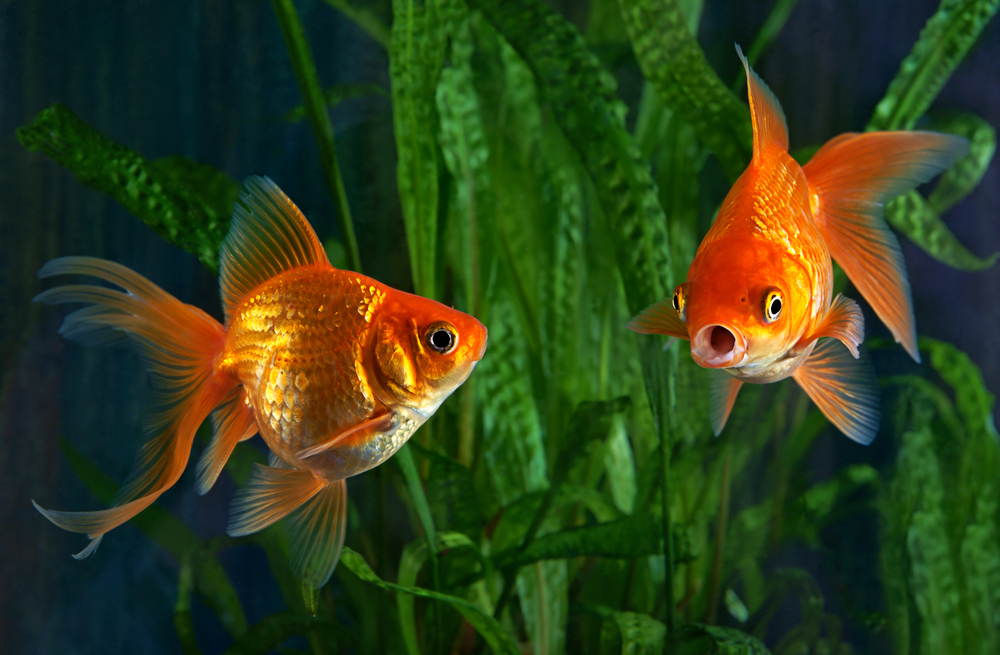One of the most well-liked aquarium fish in the world, the fancy Goldfish are renowned for their vivid colors and distinctive personalities.
Nonetheless, a lot of people are often interested in learning how do goldfish mate and what transpires during the breeding cycle that generates a goldfish fry. As such, we will dig into the intriguing realm of goldfish mating behavior in this blog post and examine the complex behaviors and processes at play.
We’ll give you a thorough primer on understanding everything you need to know regarding breeding goldfish. This includes everything from wooing customs through the spawning procedure and the growth of fertilized eggs.
To discover more about how goldfish mate, read on if you have an interest in goldfish breeding or are just interested in the wonders of aquatic life.
Contents
How Do Goldfish Mate?
Because of their distinctive beauty and personality, Goldfish are intriguing creatures that have won people’s hearts worldwide. These fish are known to be highly flexible and survive in various habitats. This includes outdoor ponds and aquariums.
The mating process of Goldfish involves a diverse set of actions and biological systems that are fascinating and amazing, making it one of the fascinating features of goldfish behavior.
This section will examine goldfish reproduction, courtship customs, spawning procedures, and the growth of fertilized eggs in Goldfish.
Courtship Behavior
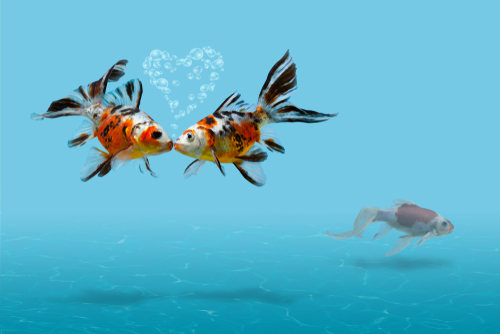
During the breeding season, before mating, Goldfish engage in a sequence of courtship rituals that include various actions and displays intended to entice a prospective mate. The male Goldfish typically engage in these acts because they are actively looking for female Goldfish to mate with.
The male Goldfish frequently hunt the female Goldfish around the tank or pond during the courting ritual in an effort to move them into a position that facilitates successful mating.
The way males communicate with the female Goldfish using their fins is one of the most interesting parts of their courtship behavior. Males will also flaunt their colors and fins as they imitate a dance to impress their female counterparts, ready to mate and prove their suitability as a mate.
During mating season, males’ fins develop little white or pink lumps called breeding tubercles. These tubercles serve as a visual cue for females, letting them know that the male is ready to mate and is a good match. It is uncommon for one male Goldfish to court multiple females simultaneously, but it rarely happens.
In addition, pheromone usage is a core part of Goldfish courting behavior. Pheromones that male Goldfish emit into the water can signal to females that they are ready for a romantic relationship. Because it enables males to attract females without direct physical contact, this chemical communication is crucial in courtship.
Generally, goldfish courtship behavior is a unique and intricate process that includes a variety of behaviors and visual clues. Males increase their chances of successfully reproducing by putting on courtship displays to entice and impress prospective female partners.
Spawning Method
The spawning process starts once a male adult goldfish has successfully drawn a female goldfish. Spawning usually occurs in the spring, when the days get longer, and the water temperatures rise.
Male Goldfish tend to grow more aggressive and territorial during this period, constructing nests from plants or other materials to entice females.
A female goldfish releases eggs into the water when ready to spawn. The male will next release milt to fertilize the eggs by releasing milt into the water. Many male adult fish may compete with one female for the chance to mate during this fertilization phase, which typically occurs close to the nest.
The Maturation of Fertilized Goldfish Eggs
After fertilization, the eggs start to grow into healthy embryos. Within 48 to 72 hours, goldfish eggs usually hatch into baby goldfish. The developing baby goldfish will initially eat their yolk sacs before moving to other food sources.
Since even minute levels of pollutants can be fatal to developing fry, keeping the tank or pond clean and free of contaminants throughout this period is crucial. To provide the eggs and fry with the best chance of life, adequate purification, and water quality management are essential.
Also, don’t miss on these other popular posts:
How to Set Up a tank to Breed Goldfish

Many enjoy keeping Goldfish as pet fish; breeding them may be entertaining and gratifying. However, there are a few things you need to do to set up a tank that will be good for breeding Goldfish if you’re thinking about doing so.
Initially, you’ll need a tank with a minimum capacity of 20 gallons. The Goldfish will have adequate space, as a result, to swim and develop. To help keep the water pure, you’ll also need to install a filter on the tank.
The tank needs to have some plants added to it next. Whether genuine or artificial, these plants must be safe for Goldfish. Here are the simple steps to setting a tank to breed pet goldfish
1. Pick the Proper Tank Size
The typical tank size for producing a pair of Goldfish is 20 gallons. However, larger tanks will offer more area and higher water quality. Ensure the tank is tidy and devoid of any detergent or chemical residue that can endanger the fish.
2. Install the Required Tools
A breeding tank needs an air pump, a heater, and a filter. A heater will maintain a constant tank temperature, a filter will remove waste and extra food, and an air pump will ensure enough oxygen in the water to keep it clean. In addition, you can keep an eye on the water temperature with a thermometer.
3. Fill the Goldfish Tank With Water
The next step is to fill the tank with the right amount of water, leaving space at the top to prevent overflowing. Next, a medium, like gravel or sand, should be added to the tank’s bottom. Finally, carefully rinse the substrate to get rid of any dust or dirt.
While cycling water into the tank, don’t forget to add water conditioner. Conditioners neutralize chemicals harmful to your fish and combat chloramines.
4. Bring in the Goldfish
Select at least one male and one grown-up female Goldfish to breed or put two adult goldfish in a shallow tank together. Before introducing them, the health of both fish must be guaranteed. When adding fresh fish to the breeding tank, quarantine them for at least two weeks to ensure they are disease-free.
5. Provide a Breeding Environment
Goldfish reproduce by depositing their eggs in stimulating breeding conditions, specifically on a spawning medium, such as a plant cluster. A spawning mop of floating nylon string can be bought, or you can make your own by wrapping yarn around a pole or rod. Chemicals that could harm the fish or the eggs should not be in the spawning media.
You can also add some artificial bushy plants to create a natural-looking goldfish habitat, giving the goldfish cover and aiding in maintaining clean water. Verify the health and absence of pests in the plants and the temperature of the water.
6. Observe the Water’s Purity
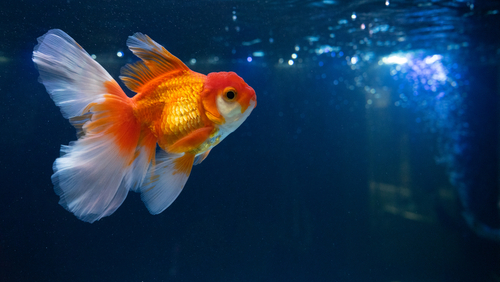
Due to the large amount of waste that Goldfish produce, it is crucial to check the water’s condition regularly. First, check the water’s pH, ammonia, and nitrite levels using a test kit. Ammonia and nitrite levels should be zero, nitrate levels should be under 40 ppm, and the pH should be between 7.0 and 8.0.
You might need to perform partial water changes once a week to keep the water clean and wholesome for the Goldfish. Use a gravel vacuum to clean the material or any particles in the water.
7. Watch the Goldfish
The behavior of breeding Goldfish can be fascinating to see. To encourage the discharge of eggs, the male will chase the female around the tank while prodding her abdomen. The male will fertilize the eggs after the female lay eggs on the spawning mop.
The eggs will hatch in two to seven days, depending on the water’s temperature. For the first few days, the fry will absorb their egg sacs; after that, they must be fed with a specially prepared diet.
8. Separate the Young Goldfish
The adult goldfish should be removed from the aquarium after breeding to avoid them devouring the goldfish eggs or baby fish. Gently capture them with a fish net and move them to a different tank or back to the primary tank.
Within a few days, the eggs will hatch, and a week or so later, the fry can swim freely. Little portions of specialist fry food should be given to the young daily. As they grow, the amount should be gradually increased. You may also need a separate fry tank from the goldfish parents.
The shell of fertile eggs will be slightly thicker than that of infertile eggs. This is because the coats of infertile eggs are more transparent and thinner.
How Long Does Goldfish Gestation Period Last?
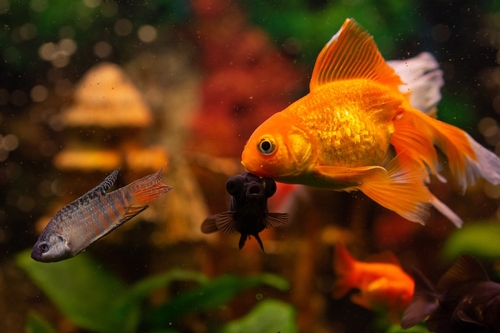
Goldfish have different gestation periods based on the water’s temperature; warmer water often has shorter gestation periods. But the gestation period for Goldfish ranges from 2 to 7 days on average.
The female Goldfish lays up to several hundred eggs during this time, which the male Goldfish then fertilizes. Within a few days, the fertilized eggs will hatch into little Goldfish known as fry.
It’s essential to keep in mind that breeding Goldfish may be a challenging and involved procedure. Several variables, such as the water’s quality, the age and health of the fish, and the time and manner of mating, all affect whether or not a breeding attempt is successful.
How Many Times Does Female Goldfish Tend to Reproduce?
Sometimes if the water temperature stays warm long enough, the Goldfish will spawn more than once. Goldfish might breed outdoors in warmer climates two or three times a season. If the water temperature remains the same in the goldfish tanks, they may spawn all year.
Goldfish may reproduce quite easily if you provide them with the right conditions. Nevertheless, because Goldfish consume their young, you must separate the goldfish babies from their parents and take care of them separately.
When Is Goldfish Breeding Season?
Like all aquatic animals, grown-up Goldfish tend to have a breeding season. Depending on where you live, keeping them in a heated outdoor pond or residing in a warm area can start in the spring and last until the fall.
Goldfish kept indoors in a heated tank can frequently reproduce throughout the year, not just during a particular season. For example, spring is when goldfish breed—specifically, a period between the end of spring and the beginning of summer.
So you can anticipate that Goldfish will start to spawn in either May or June. The goldfish breeding season may continue into the fall, depending on where you live, as long as the temperature stays consistent at 60 degrees Fahrenheit or higher.
What Foods Are Best for Breeding Fish?
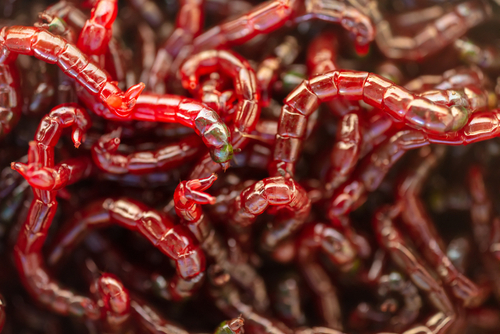
Any natural diet for a particular fish species ought to be based on what is known about what they eat in the wild. If you provide complete, natural fish food, you need to make minor adjustments for breeding. The breeding diet should supplement the whole diet with the proper nutrients for breeding purposes rather than replacing it.
When breeders inquire about preparing fish for breeding, the first suggestion is to increase their protein intake. But professional breeders also consider other dietary factors to guarantee a large, healthy spawn, a high hatch rate, and the best possible fry survival.
But in all, the fish’s staple diet should include earthworms, brine shrimp, and bloodworms, which are high in protein.
However, Since Goldfish are omnivores, they consume both meat and plants. As such, it can be challenging to go to a pet store and see all the alternatives because there are so many kinds of food you can give your Goldfish. So spend some time researching your options before making any food purchases.
Final Thoughts
Various unique and amazing behaviors and biological systems are used throughout the intricate and fascinating process of goldfish mating. As a result, there is a lot to learn and admire about the fascinating world of goldfish reproduction, from the courtship customs through the spawning procedure and the growth of fertilized eggs.
If you’re a goldfish enthusiast, you must know these procedures to give your fish the best care possible. In addition, you can encourage your Goldfish to mate successfully and give birth to healthy offspring by providing a safe and nurturing environment.
Take the time to learn more about these beautiful creatures and the fascinating world of goldfish mating, whether you are a seasoned or just a new goldfish owner.

Ian Sterling, founder of Fishlab.com, began his aquarium journey over 30 years ago, driven by a deep fascination for fish and their diverse personalities. His website, Fishlab.com, is dedicated to making fishkeeping accessible and enjoyable, offering beginner-friendly guidance, expert insights, and a community for aquarists to connect and share experiences.


